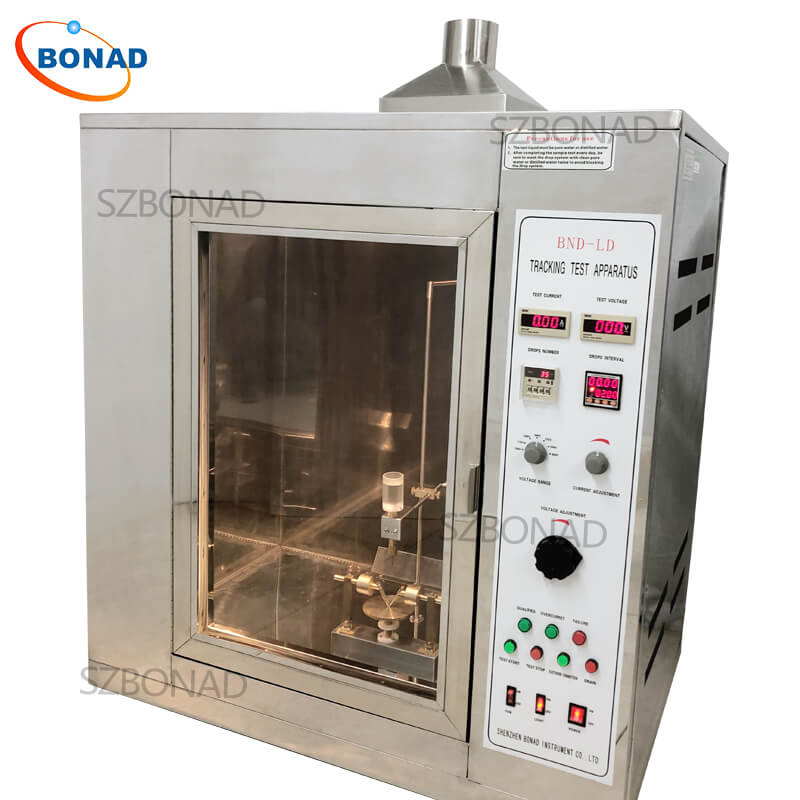Understanding the Operation of the Leakage Tracer Tester
The leakage tracer tester is a crucial tool used in evaluating the insulation quality and leakage current of electrical equipment. Its operation can be broken down into two main functions:
Insulation Quality Assessment:
In this process, the leakage tracer tester applies a specific voltage, often significantly higher than the device’s rated operating voltage, to the insulation structure of the equipment being tested. It then measures any leakage current to determine the insulation quality. Proper insulation quality is essential to prevent current leakage, ensuring both safety and reliability of the device.
Leakage Current Measurement:
For leakage current testing, the tester introduces a fault current to the equipment under test and measures the resulting leakage current. This helps in analyzing and evaluating the safety performance of the device under fault conditions.
Key Components and Their Roles
The leakage tracer tester is an indispensable piece of equipment widely utilized in electrical engineering and equipment testing. It primarily consists of four main components: power module, measurement module, display module, and control module. Here’s an overview of each part:
Power Module:
This module supplies necessary power for testing, including both AC and DC sources. It ensures a stable power supply to all parts of the tester for seamless operation.
Measurement Module:
Equipped with built-in sensors and measurement circuits, this module accurately measures the leakage current in the device being tested. As it is central to the tester’s function, its precision and stability are critical for reliable test results.
Display Module:
The display module presents test results, operational status, and other relevant information for easy monitoring by operators. It shows data such as voltage values, leakage currents, test durations, and other parameters.
Control Module:
This module oversees the entire testing process by managing control functions and parameter settings. It includes features like start/stop operations, parameter adjustments, and alarms to ensure accurate and stable testing.
Significance of Leakage Tracer Tester
Enhancing Safety: By assessing insulation quality and measuring leakage current, potential safety hazards can be identified early on, preventing electrical shocks and fire risks.
Protecting Equipment: Detecting issues with insulation performance can extend equipment lifespan.
Ensuring Normal Operation: Ensures that electrical devices operate safely under normal conditions, preventing faults and downtime due to leakage.
Primary Applications of Leakage Tracer Tester
The leakage tracer tester is vital across various sectors to detect and address electrical leakage issues in equipment, ensuring both operational efficiency and personnel safety. Key applications include:
Residential Safety:
In homes where numerous electrical appliances are used daily (such as air conditioners, washing machines, water heaters), ensuring their safe operation is crucial. The leakage tracer tester helps identify potential leaks to safeguard family members.
Industrial Production:
Industrial environments with numerous complex-operating electrical devices have higher risks of leaks. Regular use of a leakage tracer tester ensures safe device operation, reduces production accident risks, aids in maintenance tasks, and enhances operational efficiency.
Power Systems:
Power systems are essential infrastructures supporting societal stability. Real-time monitoring using a leakage tracer tester helps identify and resolve leaks during device operation, ensuring system safety while aiding in power equipment inspection and maintenance.
Maintenance & Repair:
During maintenance or repair activities involving electrical equipment, improper handling or aging can lead to leaks. The leakage tracer tester assists maintenance personnel in promptly detecting these issues for safe operations while verifying repaired equipment functionality.
Hospitality & Catering Industries:
With heavy reliance on numerous electrical devices prone to frequent use-related leaks, these industries benefit from using a leakage tracer tester to promptly identify operational issues ensuring customer and staff safety.
By leveraging advanced testing methodologies and robust performance capabilities, the leakage tracer tester plays a significant role in enhancing electrical safety and operational reliability across various industries.



